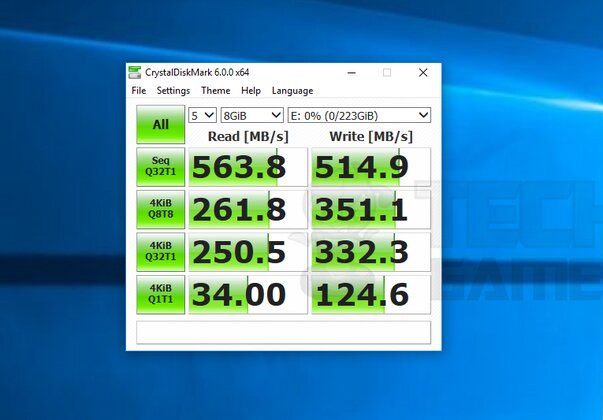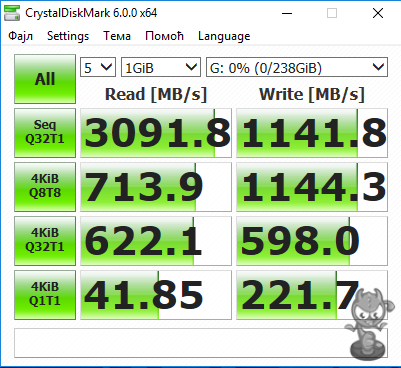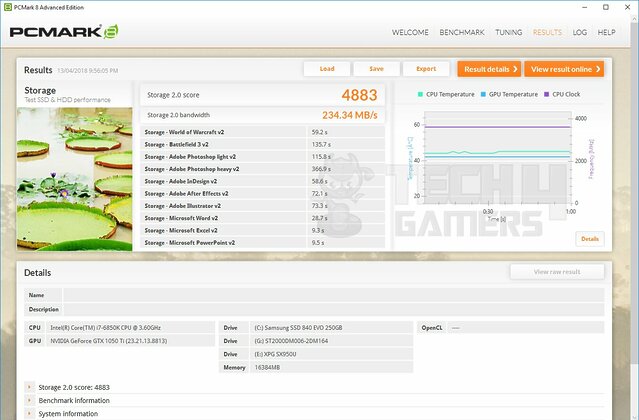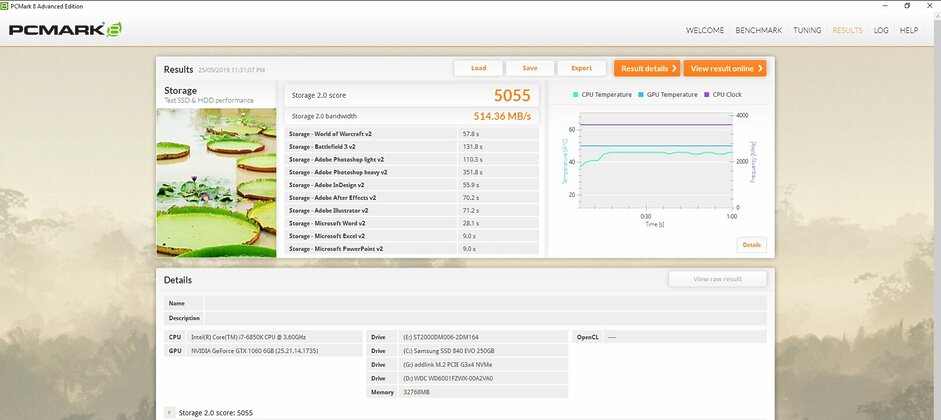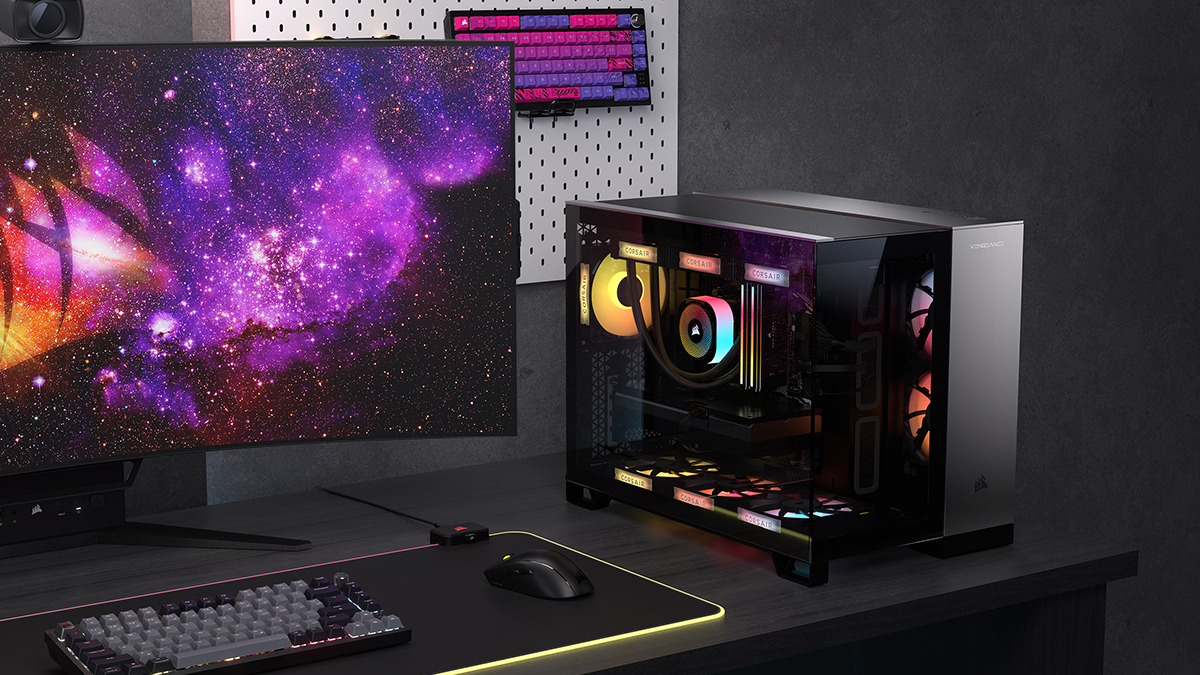- On paper, SATA SSDs lose against its competition, mainly PCIe 4.0 NVMe SSDs by over five times.
- In real-world applications there’s only a slight load time and performance difference between both SSD types.
- NVMe and SATA SSDs fall around the same price range, but 2nd hand SATA SSDs are considerably cheaper.
As an avid gamer, I always seek ways to optimize my gaming experience. This can be through higher FPS in my games, lower latency, or faster load times. Over the past few years, storing games in SSDs has provided higher FPS and quicker load times. Thanks to the advent of PCIe 5.0 and NVMe SSDs, I wondered if SATA SSDs are still good for gaming in 2024. Well, are they? Let’s find out!
SATA SSDs Against Other Options
At one point, SATA SSDs used to be the gold standard, but now we have newer technology like PCIe 4.0/5.0 and NVMe SSDs that provide monumentally higher performance. However, is that performance only better on paper, or are there any real-world implications too? Here are the results from some of my testing:
I used the ADATA XPG SX950U 240GB SATA SSD to compare its performance with the AddLink S70 256GB NVMe SSD in CrystalDiskMark 6.0 to check the read/write speed differences. As expected, both storage devices have a massive deviation, but will I see similar results in games, too?
Gaming & Productivity Performance: What To Expect From SATA SSDs
Hypothetically speaking, if an NVMe SSD could provide almost five times the load speeds, as projected above, in games, my games would load faster than I could snap my fingers. Therefore, to test my hypothesis, I put both SSDs under the wringer, and here are my results:
The above results don’t show a significant difference between the load times in both SSDs for games or productivity software. While I did expect to see something of a similar fashion, I did not anticipate the difference would be so minimal. On average, games only have a 5-second difference in loading in both SSDs.
But what about the average FPS in games? I also gave that a run, and there wasn’t much difference in games. Don’t believe me? Check out the following graph:
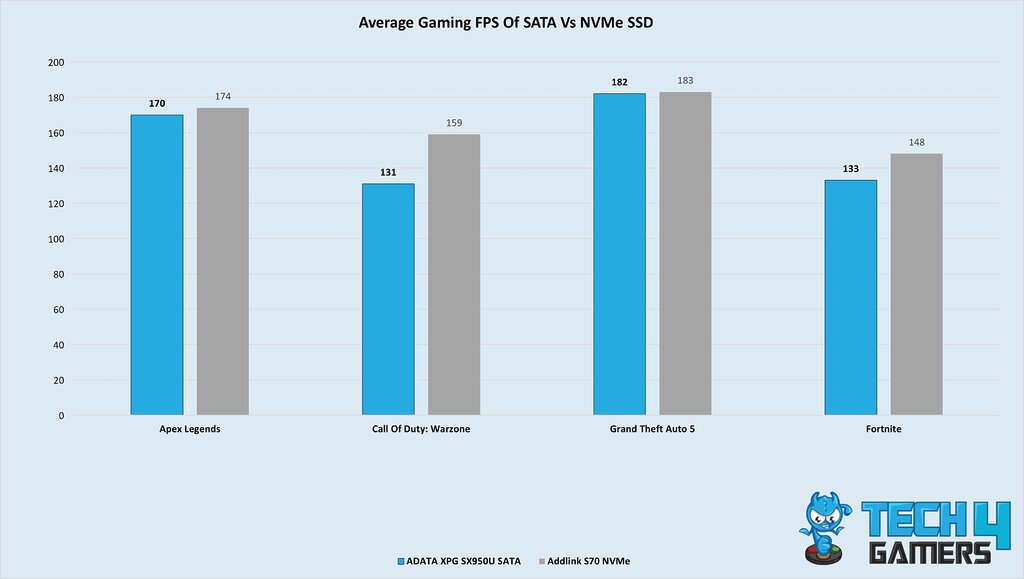
As I said, there isn’t a significant performance difference between the SATA and NVMe SSDs. In fact, in GTA 5, the difference is pretty much negligible. The only issue now is whether the performance uplift from an NVMe SSD is worth its extra price.
Capacity And Cost ― Which Does It Better?
Moving towards the prices of both SSD types, an average SATA SSD like the Lexar NS100 256GB costs ~$23. On the other hand, a more affordable NVMe SSD like the TEAMGROUP MP33 256GB, which doesn’t even have a heatsink, costs ~$26, a slight increase from the former. There’s a similar price gap with higher capacity, with NVMe SSDs costing ~$5 more on average.
On the other hand, an average 7,200 RPM hard drive like the Seagate Barracuda 1TB only costs about ~$43, making it the most economical option. However, hard drives are more likely to bottleneck your PC in modern games. That’s why I don’t recommend them for gaming.
Hence, looking at the pricing, I must admit that NVMe SSDs aren’t a bad option. But suppose you’re trying to save as much money as possible without taking a noteworthy performance hit. In that case, a SATA SSD is also viable, as they are still good for gaming despite greater competition.
A Good Choice
SATA SSDs are a good choice whether you want to focus on gaming or work on productive tasks. However, NVMe SSDs only cost slightly more to provide more extra juice. So, if you have an NVMe slot on your motherboard, I recommend going for one. Otherwise, a SATA SSD will keep you entertained as well.
Currently, games aren’t optimized for NVMe drives or even PCIe 4.0, for that matter. That’s why I was seeing such disparities in my benchmarks. Once games delve into DirectStorage, SATA drives might not be as relevant anymore, but as of now, they indeed are, especially if you can find them 2nd hand in good health.
Thank you! Please share your positive feedback. 🔋
How could we improve this post? Please Help us. 😔
[Hardware Reviewer]
After many years of exploiting various pieces of hardware, Abdul Hannan now serves as an editor at Tech4Gamers. He’s been in the PC hardware reviewing industry for almost a decade, and his staff of passionate geeks and reviewers is second to none.
Abdul Hannan is constantly seeking new methods, you will always see him running into New Computer Courses to improve the performance of his computer components since he is an ardent overclocker. He is well-known for providing the most extensive and unbiased analysis of the newest and greatest hardware for PC gaming, including everything from GPUs to PSUs.


 Threads
Threads